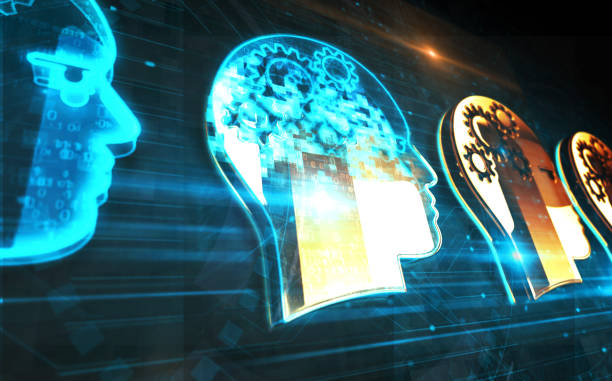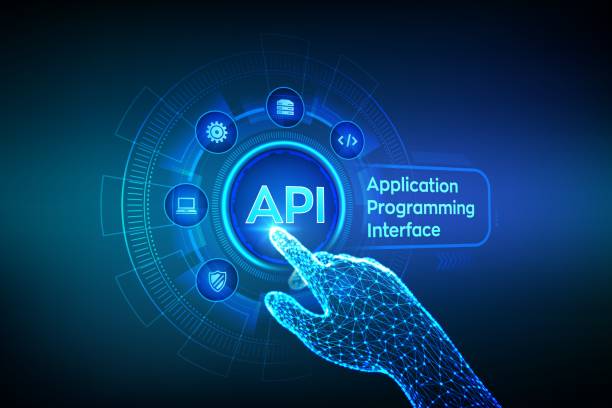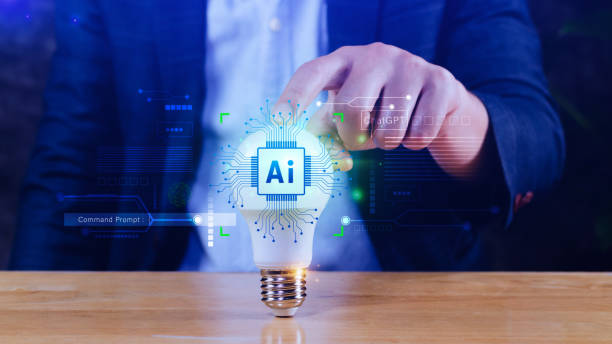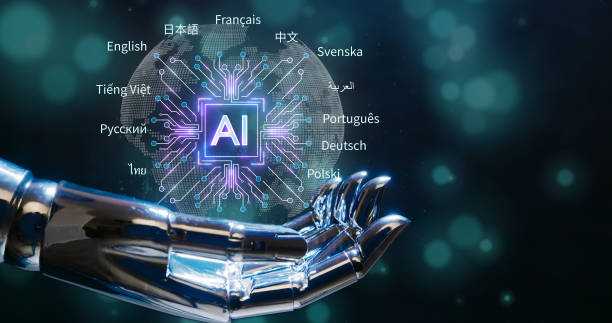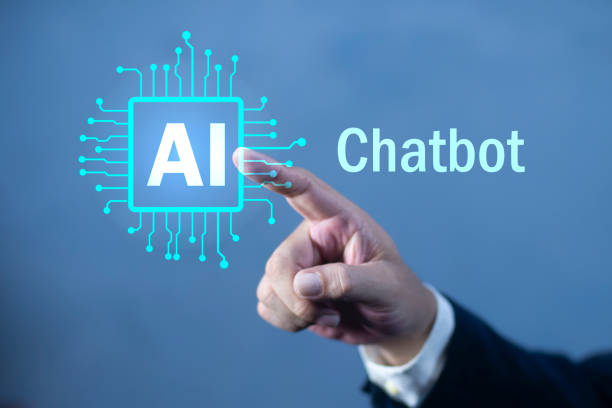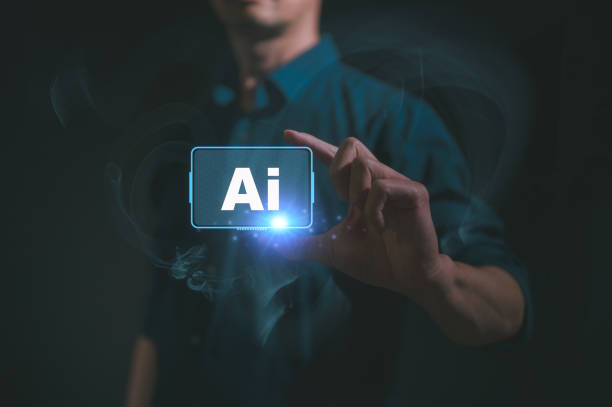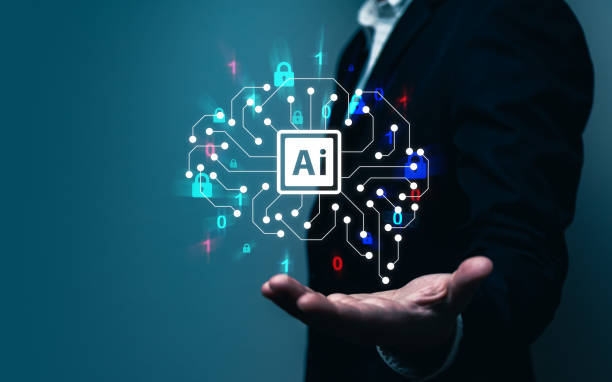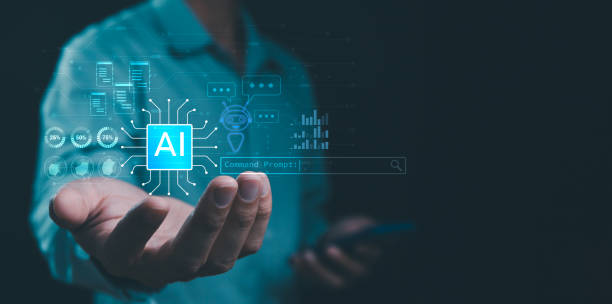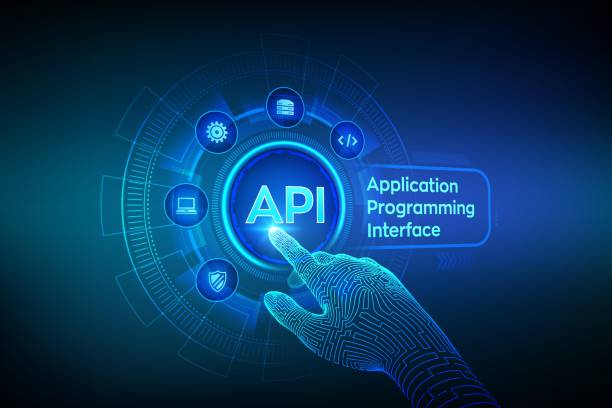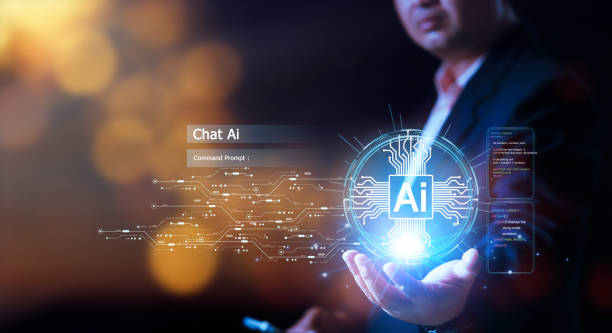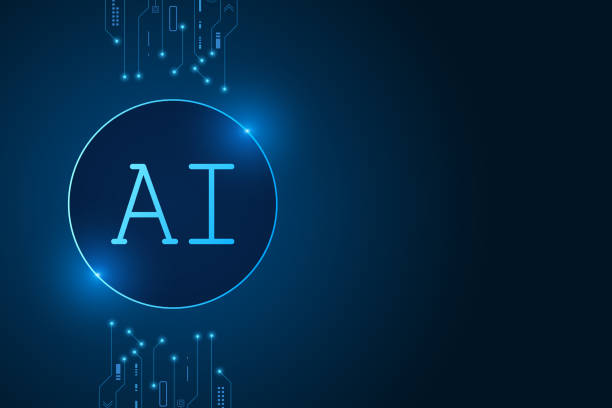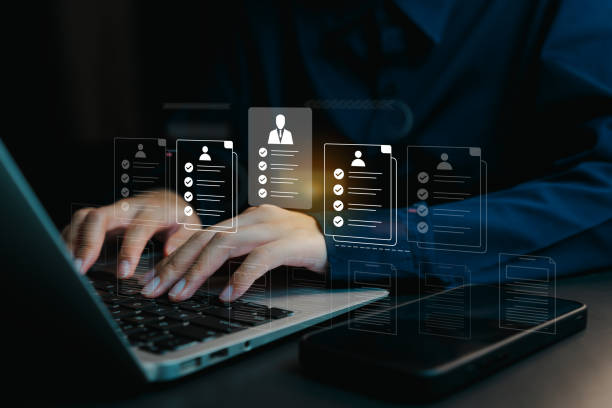What is an Artificial Intelligence Robot and What are its Applications?
An artificial intelligence robot is a combination of two important fields: #robotics and #artificial_intelligence.
In short, an artificial intelligence robot refers to robots that use artificial intelligence algorithms to perform their tasks intelligently and independently.
These robots are able to perform complex tasks by analyzing data, learning from experiences, and making appropriate decisions, which previously only humans could do.
The applications of artificial intelligence robots are very wide and they can be used in almost all industries.
Common applications include manufacturing, healthcare, education, customer service, logistics, and even entertainment.
For example, in the manufacturing industry, intelligent robots can perform critical and repetitive tasks with high accuracy and speed, while in the healthcare sector, they can be used to assist surgeons in complex operations or care for patients.
This wide range of applications has made artificial intelligence robots one of the most important technologies of the day.
Artificial intelligence (AI) enables robots to learn, solve problems, and make decisions using data.
An artificial intelligence robot is constantly learning and improving, which enables them to perform more effectively and efficiently in a wide range of tasks.
Get more information on Artificial Intelligence Wikipedia.
Does your company’s website create a professional and lasting first impression on potential customers? Rasaweb, with professional corporate website design, not only represents the credibility of your brand, but also opens a path for your business to grow.
✅ Creating a powerful and reliable brand image
✅ Attracting target customers and increasing sales
⚡ Get free consultation
The Main Components of an Artificial Intelligence Robot
An artificial intelligence robot consists of several main parts, each of which plays an important role in its overall performance.
These components include sensors, processor, actuators, and artificial intelligence algorithms.
#Sensors are responsible for collecting information from the surrounding environment.
This information can include images, sounds, temperature, pressure, and other relevant data.
The processor is the thinking brain of the robot and is responsible for analyzing the data collected by the sensors, making decisions, and planning actions.
Actuators are the tools through which the robot can interact with the environment and perform its tasks.
These actuators can include motors, arms, wheels, and other mechanical tools.
Artificial intelligence algorithms are a set of instructions and mathematical models that allow the robot to learn from data, recognize patterns, and make intelligent decisions.
These algorithms can include neural networks, decision trees, reinforcement learning algorithms, and other advanced artificial intelligence methods.
Proper and coordinated interaction between these components is the key to the successful performance of an artificial intelligence robot.
Click here to preview your posts with PRO themes ››
Also, an artificial intelligence robot needs a strong and stable control system to perform its tasks correctly.
This control system is responsible for coordinating the performance of sensors, processor, and actuators and ensures that the robot responds correctly to environmental changes and performs its tasks accurately and efficiently.
In general, an artificial intelligence robot is a complex and multifaceted system that requires careful and coordinated design and implementation of all its components.
Types of Artificial Intelligence Robots
Artificial intelligence robots can be categorized based on various criteria.
One of the most common methods is categorization based on the type of application and tasks that the robot performs.
Based on this, artificial intelligence robots can be divided into several main categories: #industrial_robots, #service_robots, #medical_robots, #military_robots, and home robots.
Industrial robots are usually used in factories and production lines to perform repetitive, heavy, and dangerous tasks.
Service robots are used in various environments such as hotels, hospitals, and shopping centers to provide services to customers and perform support tasks.
Medical robots are used in hospitals and medical centers to assist surgeons, care for patients, and perform remote surgeries.
Military robots are used in various military fields such as reconnaissance, mine clearance, and equipment transportation.
Home robots are used to perform various tasks at home such as cleaning, caring for children, and helping the elderly.
In addition, artificial intelligence robots can also be categorized based on their level of intelligence and learning capabilities.
Some robots use simple and predefined algorithms, while others use advanced machine learning algorithms and neural networks to learn and improve their performance.
Another classification of artificial intelligence robots can be based on their type of movement and physical structure.
Wheeled robots, legged robots, flying robots (drones), and marine robots are among these categories.
Choosing the right type of robot depends on the type of application and the environment in which the robot is used.
For example, wheeled robots are suitable for moving on smooth and level surfaces, while legged robots can move in uneven and complex environments.
You can get more information about robotics in this link.
Advantages of Using Artificial Intelligence Robots
The use of artificial intelligence robots has many advantages that can lead to improved efficiency, reduced costs, and increased quality in various industries.
One of the most important advantages is increasing the speed and accuracy in performing tasks.
Robots can perform tasks continuously and without fatigue, which leads to increased productivity and reduced human errors.
Another advantage is reducing labor costs.
Robots can replace human labor in repetitive, dangerous, and difficult tasks, which leads to reduced costs of salaries, insurance, and training.
In addition, artificial intelligence robots can also operate in dangerous and inaccessible environments for humans, which makes it possible to perform tasks that were previously impossible.
For example, robots can be used in mines, nuclear power plants, and underwater spaces.
Another advantage is improving the quality of products and services.
Robots can perform tasks with high accuracy and uniformity, which leads to reduced waste and increased customer satisfaction.
Also, artificial intelligence robots can help improve processes and management decisions by analyzing data and providing accurate reports.
Click here to preview your posts with PRO themes ››
Another advantage of using artificial intelligence robots is the possibility of personalization and customization of services.
Robots can provide services and products tailored to each customer by learning from their preferences and needs.
This leads to increased customer loyalty and creates a competitive advantage for businesses.
You can get more information about artificial intelligence in this link.
Does your current company website reflect the credibility and power of your brand as it should? Rasaweb solves this challenge for you with professional corporate website design.
✅ Increase the credibility and trust of visitors
✅ Attract more targeted customers
⚡ Click to get free consultation!
Challenges Facing the Development of Artificial Intelligence Robots
Despite the many advantages, the development and use of artificial intelligence robots also face challenges.
One of the most important challenges is the high cost of designing, building, and maintaining robots.
Artificial intelligence robots require advanced technologies and experienced specialists, which leads to increased costs.
Another challenge is the ethical and social issues related to the use of robots.
The widespread use of robots can lead to job losses, increased social inequalities, and security problems.
For example, hacking robots and misusing them can have irreversible consequences.
In addition, issues related to privacy and data protection are also among the important challenges in this field.
Artificial intelligence robots usually collect and analyze a large amount of data, which can lead to a violation of people’s privacy.
Another challenge is the need to develop stronger and more reliable artificial intelligence algorithms.
Current algorithms still face limitations in some areas and may not perform well in certain situations.
Also, the need to train and educate specialized human resources in the field of designing, building, and maintaining artificial intelligence robots is also one of the important challenges.
Another fundamental challenge is ensuring the safety and reliability of artificial intelligence robots.
Robots must be designed in such a way that they have safe and reliable performance even in unexpected and critical situations.
This requires the development of new methods for testing and validating robots.
You can get more information about ethics in robotics in this link.
Click here to preview your posts with PRO themes ››
The Future of Artificial Intelligence Robots
The future of artificial intelligence robots is very bright and full of potential.
With the increasing progress of technology, robots are expected to become smarter, more powerful, and more versatile.
In the future, robots will play a more important role in our daily lives and will help us in various fields such as transportation, education, healthcare, and entertainment.
For example, self-driving cars can transform the way we transport and reduce traffic and accidents.
Teacher robots can help students learn various subjects and personalize education.
Surgeon robots can perform complex surgeries with greater accuracy and precision.
Companion robots can help the elderly and lonely people and take care of them.
Also, artificial intelligence robots are expected to be used in space and help us explore other planets and build space stations.
However, to realize this vision, it is necessary to seriously address the challenges facing the development of robots and provide appropriate solutions for them.
Artificial intelligence robots can help us.
One of the important trends in the future of artificial intelligence robots is the development of collaborative robots (Cobots).
These robots are designed in such a way that they can work alongside humans and help them perform various tasks.
Collaborative robots are safer, more flexible, and cheaper than traditional industrial robots.
You can get more information about collaborative robots in this link.
Comparing Artificial Intelligence Robots with Traditional Robots
The fundamental difference between artificial intelligence robots and traditional robots is in their level of intelligence and learning capabilities.
Traditional robots usually use predefined programs and simple algorithms to perform their tasks.
They are not able to learn from experiences, adapt to new conditions, and make intelligent decisions.
In contrast, artificial intelligence robots use advanced artificial intelligence algorithms such as neural networks and machine learning for learning, decision-making, and problem-solving.
They are able to analyze data, recognize patterns, predict, and choose the best solutions.
Artificial intelligence robots can continuously learn and improve their performance.
This allows them to operate effectively in complex and unpredictable environments.
Artificial intelligence robots can also interact with humans and communicate with them through natural language.
While traditional robots usually respond to predefined commands, artificial intelligence robots can help humans and perform their tasks by understanding their intentions.
Artificial intelligence robots can perform complex tasks while traditional robots only perform repetitive tasks.
You can get more information about the differences between artificial intelligence and robotics in this link.
| Feature | Traditional Robots | Artificial Intelligence Robots |
|---|---|---|
| Intelligence | Limited | High |
| Learning | No | Yes |
| Decision-Making | Based on predefined programs | Based on artificial intelligence algorithms |
| Flexibility | Low | High |
Applications of Artificial Intelligence Robots in Industry
Industry is one of the largest application areas of artificial intelligence robots.
Robots are used in production lines, warehouses, and distribution centers to perform various tasks such as assembly, packaging, transportation, and quality control.
Industrial robots equipped with artificial intelligence can perform repetitive and tedious tasks with high accuracy and speed, which leads to increased productivity and reduced costs.
Robots can also operate in dangerous and inaccessible environments for humans, which increases the safety of employees.
For example, robots can be used in mines, nuclear power plants, and chemical factories.
Artificial intelligence robots can also help improve processes and management decisions by analyzing data and providing accurate reports.
They can recognize patterns in data, predict, and suggest the best solutions.
This allows managers to make more informed decisions and improve their business performance.
Artificial intelligence robots help to advance industry.
Artificial intelligence robots in industry can also perform tasks such as quality control, predictive maintenance, and supply chain optimization.
You can get more information about industrial robotics in this link.
Does your current website convert visitors into customers or drive them away? Solve this problem forever with professional corporate website design by Rasaweb!
✅ Create a powerful brand and credibility
✅ Attract targeted customers and increase sales
⚡ Get a free consultation right now!
Artificial Intelligence Robots in Everyday Life
Artificial intelligence robots are increasingly penetrating our everyday lives and helping us in various fields such as housekeeping, childcare, helping the elderly, and entertainment.
Robotic vacuum cleaners can automatically clean the floor of the house and save our time and effort.
Babysitter robots can take care of children and help them with homework.
Companion robots can help the elderly and lonely people and take care of them.
Entertainment robots can play with us, tell stories, and play music.
In addition, artificial intelligence robots are also used in smart devices such as mobile phones, televisions, and cars.
Voice assistants such as Siri and Alexa can answer our questions, perform our tasks, and control smart home devices.
Self-driving cars can take us to our destination and reduce traffic and accidents.
Artificial intelligence robots make life easier for us.
Artificial intelligence robots can help us perform various tasks in everyday life, including online shopping, travel planning, and financial management.
You can get more information about robotics in everyday life in this link.
| Application | Description |
|---|---|
| Housekeeping | Robotic vacuum cleaners, washing machine robots |
| Childcare | Babysitter robots, educational robots |
| Helping the elderly | Companion robots, care robots |
| Entertainment | Game robots, music robots, storytelling robots |
Important Points When Buying an Artificial Intelligence Robot
When buying an artificial intelligence robot, you should pay attention to important points so that you can choose a robot that best meets your needs.
One of the most important points is determining the purpose and application of the robot.
You should specify what you want the robot for and what tasks you expect from it.
For example, if you are looking for a robot to clean the house, you should pay attention to its cleaning capabilities, suction power, and battery life.
Another point is to check the features and capabilities of the robot.
You should make sure that the robot has the features and capabilities that are important to you.
For example, if you are looking for a robot to care for the elderly, you should pay attention to its communication, safety, and face recognition capabilities.
Also, you should pay attention to the price of the robot and your budget.
The price of artificial intelligence robots can vary greatly and depends on their features and capabilities.
You should choose a robot that is worth buying and is compatible with your budget.
Another important point is to check the opinions and feedback of other users.
Before buying a robot, be sure to check the opinions and feedback of other users to be aware of the advantages and disadvantages of the robot.
Artificial intelligence robots can be a good purchase.
Also, before buying an artificial intelligence robot, be sure to check its warranty and after-sales service.
You should make sure that the robot has a valid warranty and that you can use after-sales services if a problem occurs.
You can get more information about buying robotics in this link.
Frequently Asked Questions
| Question | Answer |
|---|---|
| What is an Artificial Intelligence Robot? | An Artificial Intelligence (AI) Robot is a machine capable of understanding the environment, reasoning, learning, and making decisions to perform tasks independently. |
| What is the difference between regular robots and AI robots? | Regular robots perform repetitive tasks based on pre-programming, while AI robots can learn from experience, interact dynamically with the environment, and even behave in a way that resembles human intelligence. |
| What are the main applications of AI robots? | They are used in industries (manufacturing, assembly), medicine (surgery, diagnosis), services (customer support, domestic), exploration (space, underwater) and many other fields. |
| What technologies are used to build AI robots? | Machine Learning, Computer Vision, Natural Language Processing, Deep Learning and Robotics are among the key technologies. |
| Can AI robots have emotions? | Currently, robots do not have emotions in the human sense. They can identify and respond to emotions, but they do not experience emotions themselves. |
| What are the main challenges in developing AI robots? | Safety, reliability, ethics, autonomy, adaptability to complex environments, and natural interaction with humans are important challenges. |
| How are AI robots trained? | They are usually trained using large amounts of data, machine learning algorithms, and deep learning to identify patterns and make decisions. |
| Examples of AI robots in everyday life? | Smart robotic vacuum cleaners, customer support chat robots, self-driving cars and surgical robots in hospitals. |
| Are AI robots a threat to human jobs? | Some repetitive jobs may be automated, but at the same time, robots can increase productivity and create new jobs in the development, maintenance, and supervision of these systems. |
| How is the future of AI robots predicted? | They are expected to become smarter, more autonomous, and capable of performing more complex tasks, and to interact more closely with humans in various environments. |
And other services of Rasa Web advertising agency in the field of advertising
Intelligent digital branding: Professional optimization to increase sales using Google Ads management.
Intelligent digital advertising: A combination of creativity and technology for analyzing customer behavior through proprietary programming.
Intelligent brand identity: Professional optimization to increase website visits by customizing the user experience.
Intelligent website development: A combination of creativity and technology to increase click-through rates by managing Google Ads.
Intelligent content strategy: A combination of creativity and technology to manage campaigns using real data.
And more than hundreds of other services in the field of internet advertising, advertising consulting and organizational solutions
Internet advertising | Advertising strategy | Advertorial
Resources
Intelligent robots and the perspective of people’s issues
,Can robots be a shoulder to cry on for single women? It happened.
,Application of robots in industries and life
,What is artificial intelligence?
? For a powerful presence in the digital world and sustainable growth of your business, Rasaweb Afrin Digital Marketing Agency is your reliable partner by offering services such as WordPress website design, SEO and social media management.
📍 Tehran, Mirdamad Street, next to the Central Bank, South Kazerun Alley, Ramin Alley No. 6
“`

